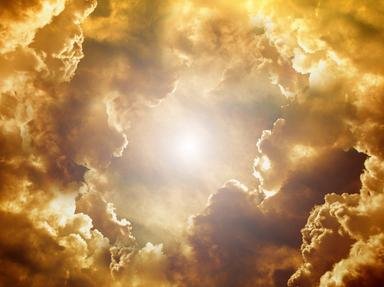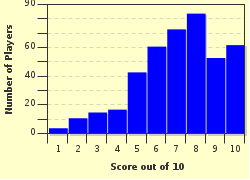Quiz Answer Key and Fun Facts
1. Of the following elements found on the sun, which is the LEAST prevalent?
2. From Earth, the Sun appears yellow, but what is generally accepted as the actual colour?
3. The Sun takes 225-250 million years to orbit the centre of which galaxy?
4. Due to the Sun not being solid, it rotates faster at its equator than it does at its poles. What is the name of this phenomenon?
5. There are nine main listed 'parts' of the structure of the Sun. Which of the following is NOT a 'part' of the structure of the Sun?
6. The parts of the Sun above the photosphere are collectively known as the WHAT?
7. Which regularly changing characteristic of the Sun leads to 'solar activity'?
8. Why do sunspots appear darker than other areas of the Sun?
9. Most people are aware that looking directly at the Sun can damage a person's eyes, but there are several conditions that can make any sun damage more severe. Which of the following options would cause the LEAST amount of damage when viewing the Sun?
10. As well as capable of doing damage, ultraviolet (UV) light from the Sun is useful in many different ways. Which of the following is NOT a positive 'use' of UV light?
Source: Author
lones78
This quiz was reviewed by FunTrivia editor
crisw before going online.
Any errors found in FunTrivia content are routinely corrected through our feedback system.

